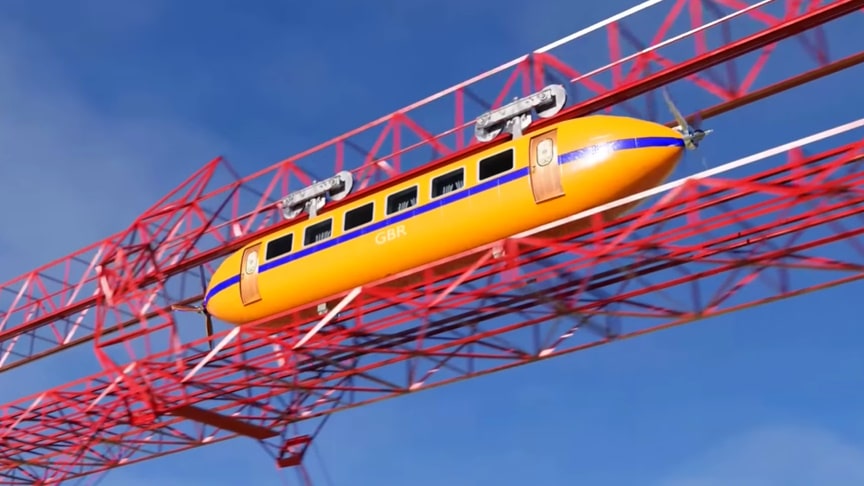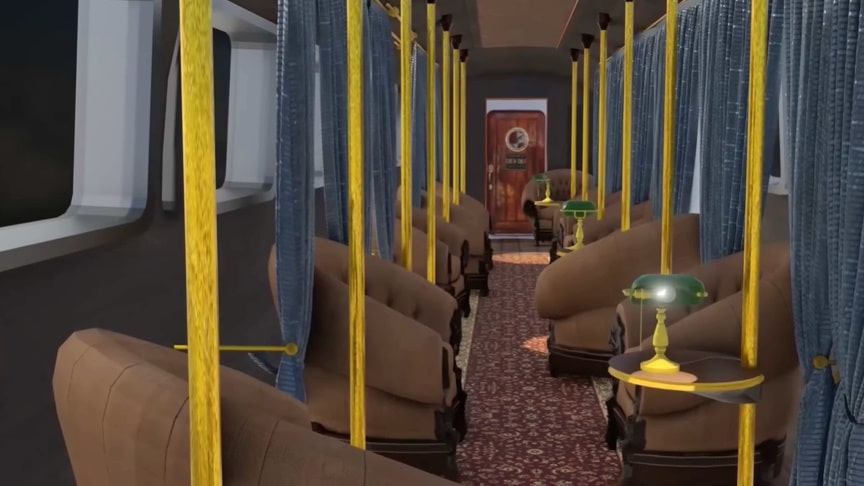The Bennie Railplane was a form of rail transport invented by George Bennie (1891–1957), which moved along an overhead rail by way of propellers. In 1929-1930 he built a prototype on a trial stretch of track over a 130-yard (119-metre) line at Milngavie, off the Glasgow and Milngavie Junction Railway, with one railplane car to demonstrate the system to potential clients.
source/image: Found And Explained
The car ran along an overhead monorail, stabilised by guide rails below. It moved by propellers powered by on-board motors. It was intended to run above conventional railways, separating faster passenger traffic from slower freight traffic.
source/image: Found And Explained
Bennie believed his railplane cars had the capability of travelling up to 120 mph (193 km/h) and would offer a “fast passenger and mails and perishable goods service”. Slow and heavy goods freight and local passenger services would continue on the traditional rail service below. Each car could carry a maximum of 48 people; the prototype had seating for fewer.
Advertisement
Critically for its design, the railcar would be moved by propellers powered by on-board motors. The Bennie Railcar had two aircraft propellers, one on each side. The propellers could be reversed, It was these two aircraft propellers that not only made the train unique in design concept, but also gave it its name — the Railplane.The train also featured a braking system on the top rail that would hold the train steady at stations. The propellers were integral to the braking system, as the Railpane would come to a halt when they were reversed.
The guests on board loved the experience!Here was a ride that was luxuriously smooth and oh-so-quiet. An invited guest on the test run had this to say: “the Railplane operated with perfect smoothness and passengers only knew the car was moving by gazing out of the window at the passing landscape. There was no bumping over rails, smoke or whistle shrieking. A ride in the coach is sheer delight.”The prototype railplane lay rusting in a field at Milngavie until it was sold for scrap in 1956. Bennie died the following year.












